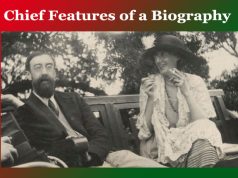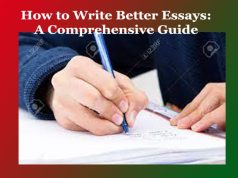Traditions of English Poetry: A Comprehensive Exploration
Traditions of English Poetry
Traditions of English Poetry: A Comprehensive Exploration
Introduction:
English poetry has a rich and diverse tradition that spans centuries, encompassing a wide range of styles, themes, and forms. This poetic heritage has evolved through various literary movements, cultural shifts, and individual creative expressions. In this article, we will delve into the traditions of English poetry, exploring key periods, notable poets, and the evolution of poetic forms.
I. Anglo-Saxon Poetry (c. 450-1066):
The earliest tradition of English poetry can be traced back to the Anglo-Saxon period. Composed in Old English, these poems often reflected the oral storytelling traditions of the time. Epic poems like “Beowulf” stand as iconic examples of Anglo-Saxon poetry, characterized by alliteration, kennings, and a strong emphasis on heroic themes.
II. Middle English Poetry (c. 1066-1500):
The Norman Conquest in 1066 brought about linguistic changes, leading to the emergence of Middle English. During this period, poets such as Geoffrey Chaucer played a pivotal role in shaping the tradition. Chaucer’s “The Canterbury Tales” is a masterpiece that showcases a blend of courtly love, satire, and social commentary. The Middle English tradition also witnessed the development of ballads and lyric poetry.
III. Renaissance Poetry (c. 1500-1660):
The Renaissance marked a significant shift in English poetry. Influenced by classical literature and the revival of learning, poets like Edmund Spenser and Sir Philip Sidney explored new forms and themes. Spenser’s “The Faerie Queene” exemplifies the use of allegory, while Sidney’s sonnet sequence “Astrophel and Stella” reflects the Petrarchan tradition. William Shakespeare, though renowned for his plays, also made substantial contributions to the sonnet form.
IV. Metaphysical Poetry (c. 1600-1680):
The Metaphysical poets, including John Donne, George Herbert, and Andrew Marvell, emerged during the 17th century. Characterized by intellectual wit, elaborate conceits, and a fusion of the spiritual and the sensual, Metaphysical poetry challenged conventional poetic conventions. Donne’s metaphysical conceits, Herbert’s religious devotion, and Marvell’s exploration of time and mortality are hallmarks of this tradition.
V. Neoclassical Poetry (c. 1660-1798):
In the Tradition of English Poetry, the Neoclassical period emphasized order, reason, and classical influence. Poets like Alexander Pope and John Dryden adhered to strict poetic forms and often engaged in satirical and didactic writing. Pope’s “The Rape of the Lock” and Dryden’s heroic couplets exemplify the Neoclassical style, which sought to emulate the poetics of ancient Greece and Rome.
VI. Romantic Poetry (c. 1789-1837):
In response to the rigidity of Neoclassicism, the Romantic poets celebrated emotion, nature, and individual expression. William Wordsworth, Samuel Taylor Coleridge, Lord Byron, Percy Bysshe Shelley, and John Keats are key figures in the Romantic tradition. “Lyrical Ballads,” co-authored by Wordsworth and Coleridge, marked the beginning of this movement, emphasizing the sublime and the emotional experiences of the common man.
VII. Victorian Poetry (c. 1837-1901):
In the Tradition of English Poetry, the Victorian era witnessed a diverse range of poetic expressions, reflecting the social, political, and technological changes of the time. Poets like Alfred Lord Tennyson, Robert Browning, and Christina Rossetti explored themes of love, faith, and social justice. Tennyson’s “In Memoriam” and Browning’s dramatic monologues are notable contributions from this period.
VIII. Modernist Poetry (c. 1901-1945):
The early 20th century saw a departure from traditional forms and a surge of experimentation in language and structure. Modernist poets, including T.S. Eliot, Ezra Pound, and W.B. Yeats, sought to capture the fractured nature of contemporary life. Eliot’s “The Waste Land” and Pound’s imagist poetry exemplify the complexity and fragmentation characteristic of Modernist works.
IX. Postmodern and Contemporary Poetry (c. 1945-present):
Postmodernism ushered in a period of diverse voices and stylistic experimentation. Poets like Sylvia Plath, Allen Ginsberg, Seamus Heaney, and Adrienne Rich explored personal and social issues through varied forms and perspectives. Contemporary poets, such as Carol Ann Duffy, Derek Walcott, and Louise Glück, continue to push boundaries and engage with evolving cultural landscapes.
Conclusion:
The traditions of English poetry are vast and dynamic, reflecting the ever-changing tapestry of human experience. From the epic narratives of the Anglo-Saxon period to the experimental works of contemporary poets, English poetry has evolved, adapted, and thrived. Each poetic tradition contributes to the rich mosaic of literary heritage, offering insights into the human condition and the power of language to capture the complexities of life. 0 0 0.
Traditions of English Poetry
FAQS on the Traditions of English POetry
What is the origin of English poetry?
English poetry finds its roots in the Anglo-Saxon period (c. 450-1066), with works like the epic poem “Beowulf” being early examples. Over time, it evolved through Middle English, the Renaissance, and subsequent literary movements.
Who are some key figures in Anglo-Saxon poetry?
Notable figures in Anglo-Saxon poetry include anonymous authors of works like “Beowulf” and Caedmon, an early English poet known for his hymn-like compositions. Traditions of English Poetry:
How did the Renaissance influence English poetry?
The Renaissance (c. 1500-1660) brought classical influences and a renewed interest in learning. Poets like Geoffrey Chaucer, Edmund Spenser, and William Shakespeare contributed to the flourishing of English literature during this period.
What distinguishes Metaphysical poetry from other poetic traditions?
Metaphysical poetry, prevalent in the 17th century, is characterized by intellectual wit, elaborate conceits, and a fusion of the spiritual and the sensual. John Donne, George Herbert, and Andrew Marvell are key figures in this tradition. Traditions of English Poetry:
How did the Romantic poets redefine English poetry?
Romantic poets, including Wordsworth, Coleridge, Byron, Shelley, and Keats, emphasized emotion, nature, and individual expression. They rejected Neoclassical rigidity and celebrated the sublime in nature.
Who were prominent Victorian poets, and what themes did they explore?
Victorian poets like Alfred Lord Tennyson and Robert Browning explored themes of love, faith, and social justice. Tennyson’s “In Memoriam” and Browning’s dramatic monologues are notable works from this period (c. 1837-1901).
What characterized Modernist poetry in the early 20th century?
Modernist poets, including T.S. Eliot, Ezra Pound, and W.B. Yeats, departed from traditional forms, embracing experimentation in language and structure. “The Waste Land” by Eliot is a significant Modernist work.
Who are some influential contemporary poets?
Contemporary poets like Carol Ann Duffy, Derek Walcott, and Louise Glück continue to contribute to English poetry. They engage with diverse forms, themes, and perspectives, reflecting the complexity of the modern world.
How has postmodernism impacted English poetry?
Postmodernism ushered in a period of diverse voices and stylistic experimentation. Poets like Sylvia Plath, Allen Ginsberg, and Adrienne Rich explored personal and social issues through varied forms and perspectives.
Is English poetry still evolving today?
Yes, English poetry continues to evolve with contemporary poets exploring new forms, themes, and perspectives. The tradition remains dynamic, reflecting the changing cultural and social landscapes of the present day. 0 0 0.
Traditions of English Poetry:
List of Some Poems with Analytical Studies
- E. De Sauza’s Poem ‘Marriages are Made’: An Analytical Study
- Telephone Conversation a Poem by Wole Soyinka: An Analytical Study’
- The poem ‘Harlem’ by Langston Hughes: An Analytical Study
- Maya Angelou’s Poem ‘Still I Rise’: An Analytical Study
- Dulce et Decorum Est’ by Wilfred Owen: An Analytical Study
- Nature Images in Sassoon’s Essay ‘Return from the Somme’ and in Henry Reed’s Poem ‘Naming of Parts’
- The Poem ‘Naming of Parts’ by Henry Reed — An Analytical Study
- Marge Piercy’s Poem ‘Breaking Out’: An Analytical Study
- Robert Frost’s poem ‘Mending Wall’: An Analytical Study
- Ogden Nash’s Poem ‘This is Going to Hurt Just a Little’ — An Analytical Study
- Ask Me No More Where Jove Bestows: An Analytical Study
- T.S. Eliot’s Poem ‘Little Gidding’— An Analytical Study
- D.H. Lawrence’s Poem’The Snake’– An Analytical Study
- M M’s Poem ‘You Have Given Me’— An Analytical Study
- G. M. Hopkins’ Poem ‘Carrion Comfort’: An Analytical Study
- W. Blake’s Poem ‘A Robin Redbreast in a Cage’-An Analytical Study
- W. Wordsworth’s Poem ‘To the Skylark’– An Analytical Study
- Robert Southey’s Poem ‘The Scholar’ — An Analytical Study
- The Poem ‘Come to Me in My Dream and Then’: An Analytical Study
- W. Shakespeare’s Sonnet No. 151–An Analytical Study
- W. Shakespeare’s Sonnet No. 152–An Analytical Study
- W. Shakespeare’s Sonnet No. 153–An Analytical Study
- W. Shakespeare’s Sonnet No. 154–An Analytical Study
- Emily Dickinson’s Poem: ‘Hope is the Thinking With Feathers’ –An Analytical Study







